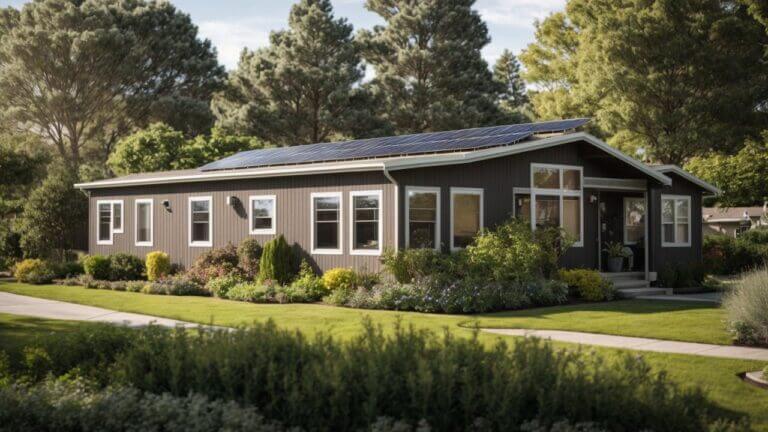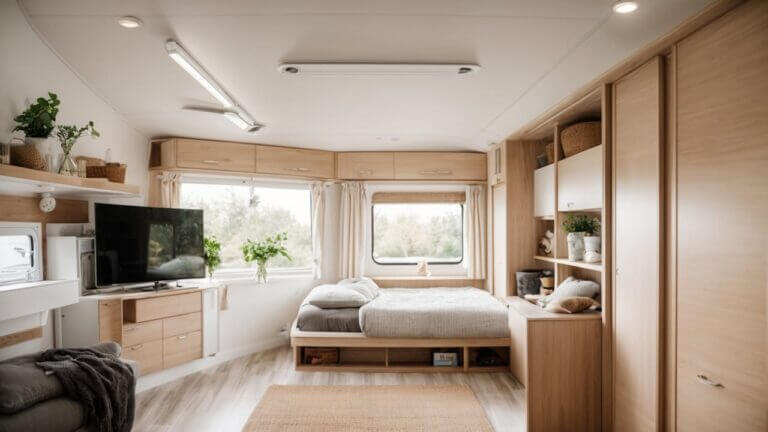Death of Mobile Homes
In the aftermath of World War II, America faced a housing shortage that spurred innovation and necessity, giving rise to the popularity of mobile homes.
These mass-produced residences promised a solution to the urgent need for affordable living spaces. Yet, they were constructed rapidly and cheaply, often without adherence to building standards, resulting in a stigma of low quality.
The Dawn of Affordable Living: From Wheels to Wealth
Picture these early homes: they sat on metal chassis, complete with wheels, ready to hitch up and move on a whim. But this mobility came at a cost—durability and quality were often sacrificed.
The very allure of mobile homes, their affordability, and simplicity, became their Achilles’ heel. As these homes proliferated, the evident poor quality could no longer be ignored, prompting the government to intervene. It was a pivotal moment where the quest for cost-effective housing met the uncompromising standards of safety and quality. This introduction sets the stage for a transformative era in factory-built housing, marking the transition from movable shelters to the birth of a new asset class in manufactured homes.
As we delve into the historical tapestry of factory-built housing, we’ll witness the evolution from the humble mobile home to today’s modern manufactured houses that defy the stereotypes of yesteryear. Join me on this journey through time, as we explore how necessity, innovation, and regulation reshaped the landscape of affordable housing and, with it, the American Dream.
A New Blueprint for Quality: Enacting The 1976 HUD Standards
In a decisive move to eradicate the poor reputation of mobile homes, the U.S. Department of Housing and Urban Development (HUD) introduced the Manufactured Home Construction and Safety Standards in 1976. This was a game-changer. For the first time, factory-built homes had to meet federal guidelines that ensured quality, safety, and durability. These rigorous standards were not mere suggestions but enforceable mandates that sought to protect consumers and elevate the entire industry.
The introduction of the HUD Code also marked a symbolic shift in terminology: homes built after 1976 were to be called “manufactured homes” instead of mobile homes. This was not just a rebranding effort; it was an acknowledgment of their permanent nature and improved construction practices. The HUD Code was not static; it evolved, embracing continuous improvement and addressing emerging technologies and materials. This new blueprint for quality transformed the perception of factory-built homes from temporary fixes to lasting solutions.
The inception of the HUD Code was a defining moment in the evolution of factory-built housing. It set a new standard, ensuring that homes were not only affordable but also safe and built to last. The next section will delve into how these standards revolutionized the industry, leading to a surge in the value and perception of manufactured homes.
Reinventing the Foundation: Permanent Chassis and Building Codes
The HUD standards enacted in 1976 were more than a set of guidelines; they were a catalyst for an industry-wide metamorphosis. One of the most significant changes was the requirement for a permanent steel chassis. This innovation was not about restricting the homes’ mobility but about reinforcing their structural integrity. The elimination of wheels was symbolic, signifying the transition from a transient solution to a stationary, long-lasting home.
This era also brought about stringent building codes that governed all construction materials and methods used in manufactured homes. By establishing these rigorous protocols, HUD ensured that every manufactured home was built with the utmost precision and care. The standards encompassed every aspect of home construction, from energy efficiency to fire safety, and from plumbing to electrical systems.
These improvements had an unexpected yet welcome effect: they turned the tide on depreciation. Traditional mobile homes lost value rapidly, much like vehicles, but manufactured homes began to appreciate over time, mirroring the behavior of site-built homes. This section has delved into the tangible shifts in the industry post-HUD. As we progress, we’ll see how these foundational changes set the stage for the modern manufactured housing industry, where homes are not just built to last but also designed to impress.
Bridging the Gap: Today’s Manufactured Homes
The modern manufactured home is a testament to the profound impact of HUD standards. Today, these homes are constructed in factories under controlled climatic conditions, which significantly improves the quality and efficiency of the build. They meet, and often exceed, the same codes of quality and safety as their site-built counterparts, rendering them virtually indistinguishable in both appearance and amenities.
But the evolution doesn’t stop at construction techniques; it extends to the consumer experience. Manufactured homes now appreciate in value over time, a stark contrast to the rapid depreciation of the early mobile homes. They have become a viable option for homeownership, complete with the potential for conventional mortgage financing. This section has showcased the current state of manufactured housing, a far cry from its humble origins.
With the modern manufactured home, the line between factory-built and traditional homes has blurred. The industry has not only matched the standards of site-built homes but has also set new benchmarks in affordability and sustainability. As we conclude, we’ll reflect on how this transformation has redefined the perception of manufactured housing and its role in the future of homeownership.
Quality Homes for All: Embracing Manufactured Homes
The journey of factory-built housing from its origins as mobile homes to today’s manufactured homes is a narrative of revolution, resilience, and rebirth. The HUD Code, introduced in 1976, was a watershed moment that signaled the end of the era of transient, low-quality mobile homes and the beginning of the ascent of manufactured homes known for their quality, safety, and durability. This pivotal transition rendered the old mobile homes obsolete, replacing them with a new breed of factory-built homes that have reshaped the public perception and the market itself.
Today, as we stand in the wake of this transformation, manufactured housing continues to evolve, emerging as an increasingly attractive and affordable housing option. The stigma once associated with mobile homes has been dismantled, piece by piece, by the continuous advancements and stringent standards that now define the industry. Manufactured homes have become a cornerstone in the pursuit of the American Dream, providing a path to homeownership that is accessible to a broader demographic.
Looking forward, the legacy of the HUD standards is a testament to the potential of policy and innovation to enact positive change. The evolution of factory-built housing stands as a reminder of the remarkable progress that can be achieved when necessity drives us towards improvement and regulation works hand in hand with industry to uplift quality and assurance. As the narrative of factory-built housing continues to unfold, it will undoubtedly play a significant role in addressing the housing challenges of the future, making the dream of homeownership a reality for generations to come.



